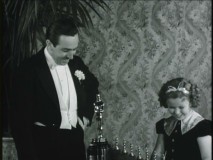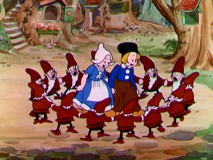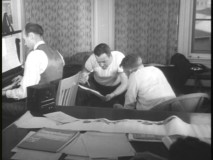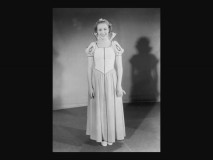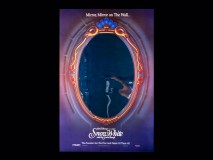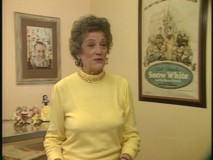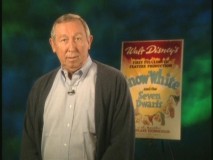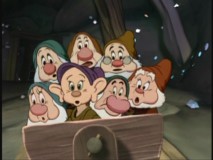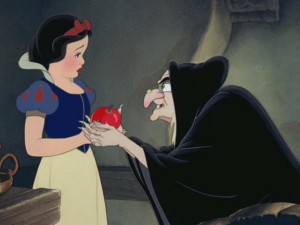Snow White and the Seven Dwarfs: Diamond Edition Blu-ray Review
 |
Snow White and the Seven Dwarfs
Theatrical Release: December 21, 1937 / Running Time: 83 Minutes / Rating: G Director: David Hand / Writers: Ted Sears, Richard Creedon, Otto Englander, Dick Rickard, Earl Hurd, Merrill De Maris, Dorothy Ann Blank, Webb Smith (story adaptation); Wilhelm & Jacob Grimm (fairy tales) Voice Cast (uncredited): Adriana Caselotti (Snow White), Lucille LaVerne (The Queen/Old Peddler Woman), Pinto Colvig (Sleepy, Grumpy), Billy Gilbert (Sneezy), Otis Harlan (Happy), Scotty Mattraw (Bashful), Roy Atwell (Doc), Eddie Collins (Dopey), Harry Stockwell (The Prince), Stuart Buchanan (The Huntsman), Moroni Olsen (The Magic Mirror) Songs: "I'm Wishing/One Song," "With a Smile and a Song," "Whistle While You Work," "Heigh-Ho", "Bluddle-Uddle-Um-Dum (The Washing Song)", "The Silly Song," "Someday My Prince Will Come" |
Buy Snow White and the Seven Dwarfs: Diamond Edition (2 Blu-ray Discs, 1 DVD) from Amazon.com in...
Blu-ray Packaging Deceptive DVD Packaging Collector's Book Set Seven Dwarf Plush Set Limited Edition Collector's Set
Buy New Standard 2-Disc DVD
The remaining supplements can be found on the second Blu-ray disc. Under Backstage Disney: Diamond Edition is "Hyperion Studios." This elaborate feature holds the bulk of the bonus content. After an introduction by Pixar's Andrew Stanton, the viewer can access different departments containing numerous supplements (all in HD). These rooms are presented via original black and white photos with minor animation. The first section here is the Hyperion Exterior. The first of three things here, "Where It All Began" (11:48) explains the special bond Walt had with his staff when they worked at Hyperion and could easily brainstorm with one another. "The One That Started It All" (17:08) takes a look at the impact Snow White has had on modern filmmaking and some of the challenges met in creating something never before attempted. "Family Business" (1:57) offers some anecdotes on Walt's levity and how much he loved play around at work.
Story Room holds eight features. "Stories from the Story Room" (1:14) has several crew members reminiscing about different incidents, including one in which Walt found the story team playing darts with pushpins. "Five Bucks a Gag" (1:46) talks about the involvement of staff members from every department in pitching gag ideas for the film. "In Walt's Words: The Huntsman" (3:25) will be familiar to those who've watched the "Walt's Story Meetings" feature on the Bambi DVD. Like that feature, this one has actors vocally recreate the story sessions Walt had with his team taken word-for-word from stenographs. Windows containing film footage, corresponding storyboards, and photos all alternate places and move across the screen. Note that this replaces a more direct storyboard-to-film comparison from the 2001 Platinum Edition.
"Walt's Night Prowls" (0:52) features anecdotes about some of the things Walt would rummage through after everyone left work. "Gabby, Blabby, and Flabby" (1:14) goes through the long list of names considered and rejected for the Dwarfs. The 1932 short Babes in the Woods (8:04) is introduced by animator Andreas Deja. It is included due to its link to the Brothers Grimm and its usage of dwarf and witch characters. Two galleries are also included, one for storyboards (126 stills) and one for abandoned concepts (63 stills). The latter replaces the "Snow White Meets the Prince" and "The Prince is Captured" features from the Platinum Edition, which married the stills to score from the final film.
Music Room holds four items. "Music Room Host" is an introduction to the section by Ron Clements. "David Hand's Dirty Trick" (1:18) relays an incident in which Snow White's supervising director tried to prove Walt's story timing wrong. "The Music in Snow White" (6:14) discusses how innovative the musical score was at a time when songs in musicals usually didn't advance storytelling. The 1929 short The Skeleton Dance (6:02) is included, introduced by John Musker for its marriage of music and on-screen action.
Six features are found within Art Department, starting with "The Idea Man" (1:41), a piece about artist Albert Hunter and his work on the film. "Visual Development Gallery" (146 stills) showcases some of experimental work done to determine the overall look of the picture. "Creating the World of Snow White" (6:53) further examines the European influence on the film's visual style. 1935 short Music Land (10:15) is presented here due to its Albert Hurter inspirations. "Gustav Tenggren Art Gallery" (16 stills) presents some of the artist's distinctive design work. "In Walt's Words: Cleaning the Cottage" (7:03) offers a presentation like the one found in the Story Room, this time pertaining to the "Whistle While You Work" sequence and replacing another of the Platinum Edition's storyboard-to-film comparisons.
Character Design contains a Character Design Gallery, which devotes sections to Snow White (36 stills), the Queen (36 stills), the Dwarfs (51 stills), the Prince (9 stills), and the Magic Mirror (5 stills). "In Walt's Words: The Dwarfs" (5:49) is another of the flashy re-enactment comparisons, with an emphasis on the "Heigh-Ho sequence" and a bit from when the dwarfs meet Snow White. The section ends with a Color Tests Gallery (12 stills).
Background and Layout is one of the lightest departments, holding only three features. A Backgrounds Gallery (25 stills) and Layout Gallery (115 stills) both feature the full backdrops and penciled camera positions for the characters to roam. "Setting the Stage" (4:04) has Don Hahn explaining the way the backgrounds were created to accommodate the action and camera movements, using a piece from "One Song" as an example.
Six more pieces can be found in the Animation Department. "The Animators' Favorite Animators" (2:00) has the original artists reflecting back on each other's work and comparing styles. "Blowing Off Steam" (2:17) reveals some of the pranks the animators would play on each other to loosen up. A carry-over from the 2001 Platinum Edition, 1934's Goddess of Spring (10:04) is introduced by Andrew Stanton and shows an early attempt at realistic human animation. Another short, 1934's Playful Pluto (8:04) is provided as an example of personality animation and comes with an introduction by Paula Sigman. "Bringing Snow White to Life" (11:33) focuses on the film's lead animators and how they brought their own unique approaches to their respective characters. A 39-still Animation Art Gallery presents cleaned-up line drawings of the characters.
The Live Action Reference section starts with a "Live Action Host" (0:50), this time John Musker introducing the section at hand. For the Sweatbox section, Eric Goldberg acts as "Sweatbox Host" (0:53) to explain the purpose of this infamous screening room. "Sweating It Out" (1:09) presents several recollections on sharing this viewing experience with Walt himself. Ported over from the 2001 DVD, "Deleted Bedroom Fight Scene" (2:26) is a roughly-animated sequence meant to cap off Snow White and the dwarfs' first meeting. It's introduced by Musker.
Four features are found within Ink and Paint. The first of these, "The Challenges of Ink and Paint" (1:41), reveals how difficult and nerve-racking the process could be. "Life in the Nunnery" (1:59) is about the women who worked in the ink and paint department and their isolation from the male animators across the lot. The 1932 short Flowers and Trees (8:31) is introduced by Paula Sigman and is included for its prestige as the first color cartoon. The section ends with a 14-still Painted Cells Gallery.
Camera Department begins with "Stories from the Camera Department" (2:04), which recounts some of the challenges faced, particularly with the multiplane camera. Ron Clements introduces the 1937 short The Old Mill, which made extensive use of the multiplane camera. "Decoding the Exposure Sheet" (6:47) acts as a sequel to "Setting the Stage," with Don Hahn showing how codes on the sides of the artwork signified how that particular shot would be filmed.
Sound Stage is perhaps the leanest section. "Walt's Early Masters of Sound" (1:51) shows how various everyday items were used to create the extensive sound effects heard in the feature film. Mickey Mouse's 1928 debut, Steamboat Willie (8:02), is introduced by Goldberg and featured here for being the first Disney short with synchronized sound.
The Hyperion tour finally wraps up at Walt's Office. "Working with Walt" (1:48) has crew members reminiscing about their boss and how unconventional his tactics were. A Publicity Gallery (34 stills) features various posters throughout the decades, while Production Photo Gallery (21 stills) holds behind-the-scenes shots.
The entire Hyperion experience as a whole is quite impressive. As entertaining and informative as Disney documentaries can be, the last few in the Platinum Collection felt almost ordinary. For this first entry in the Diamond Collection, things were obviously shaken up to make for a unique experience. For example, there are surprisingly few talking heads. For the most part, the clips mix audio from archival interviews with behind-the-scenes photos and even modern storyboards to illustrate certain anecdotes. If there's one caveat, it's the lack of a "Play All" function. Even with the index, it can become a bit tiring to wade through all the clips, especially since most run under 10 minutes. Still, this is a handsome and creative presentation.
The other feature located under Backstage Disney is, oddly enough, a repeat from the Hyperion Studios tour: the featurette "The One That Started It All" (17:08) (HD). Apparently Disney thinks enough of this as an all-encompassing "making of" to put it outside the Hyperion tour to make sure people don't miss out on it. While it's nicely done, to be sure, it doesn't cut it as a true look at the making of the film. Its tone is too congratulatory, and its focus is more on Walt's journey to get this picture made than on the actual production details.
Disc Two's other heading is Classic DVD Bonus Features. It's strange to label these things "classic" a mere eight years after they were first seen, but Disney has always been rather loose with the term, anyway. The first of the recycled features is "Animation Voice Talent" (6:21) (SD). This takes a look at actors who lent their voices to the film's memorable characters. The late Adriana Caselotti is the only one interviewed, so historians and Disney staff members fill out the rest with what they know. It's a concise, though all-too-brief, breakdown of this filmmaking element.
"Disney Through the Decades" (41:39) (SD/HD) is mostly from the 2001 DVD, but with a couple of new elements. It begins with a new introduction by John Ratzenberger and then follows the Disney company's history through the years. Throughout each decade, Snow White's re-releases are used as a link to tie them together, and each segment concludes with a Snow White trailer from that time period. The decade hosts are Roy E. Disney for the 1930s, Angela Lansbury for the 1940s, Fess Parker for the 1950s, Robby Benson for the 1960s, Dean Jones for the 1970s, Jodi Benson for the 1980s, Ming-Na for the 1990s, and John Ratzenberger again for the 2000s. The trailers that link the segments come from 1937 (two of them), 1944, 1958, 1967, 1987, 1993, and 2001. "Dopey's Wild Mine Ride" is a set-top game in which the player must answer several questions to help Dopey round up the other dwarfs to save Snow White. Such questions involve picking the right movie clip out of a group of altered ones, answering trivia about the dwarfs, and matching items to corresponding choices. Some limited animation bridges these together, and it's enough to make this better than average.
The disc concludes with a "Heigh-Ho" sing-along (2:55). Taken from the Disney Sing-Alongs compilation of the same name, this shows the musical sequence with animated lyrics. It makes for nice nostalgia, but it's rendered somewhat superfluous by the subtitle option on disc one.
Overall, the bonus features on this Diamond Edition are of top notch quality. Unfortunately, what's missing from this release is just as important. Some extras from the 2001 Platinum Edition weren't ever going to make it to this new release, such as Barbra Streisand's rendition of "Someday My Prince Will Come," a featurette on the 2001 restoration, and text-based features. Those are understandable, but others aren't. Features inexplicably left off this new release include two storyboard-to-film comparisons that lack an "In Walt's Words" replacement, camera tests, live-action reference footage, one fully animated deleted scene, an alternate version of "Someday My Prince Will Come," L.A. premiere footage, and all of the archival audio, among others.
Space shouldn't have been a concern since these would've been in standard definition, and Disc One is light enough to hold some of these if need be. To make matters more baffling, several of the 2001 features, such as two vintage promotional films, were recently passed by the British Board of Film Classification, yet fail to appear here. Normally it would seem naοve to believe that every single feature from the old release can be ported over, but coincidentally enough, Warner Brothers recently released a 70th Anniversary Edition of a film that owes its existence to Snow White: The Wizard of Oz. That BD release not only holds every single bonus feature from previous releases, but it manages to add a few new ones, as well. Such efforts make the omissions on Snow White all the more glaring.
Another cause for concern is how Disney is marketing this release. October 6th sees two general releases (not including three premium gift set versions) that seem different but are absolutely identical outside of packaging. Both of these releases contain two Blu-ray discs and a DVD copy of the feature film (with only the commentary, Tiffany Thornton's music video, and the Princess and the Frog sneak peek for accompaniment). Called a "Blu-ray + DVD", one is packaged in a standard Blu-ray case; the other poses as a "DVD + Blu-ray" in a standard black DVD case.
This approach ensures Snow White placement in both DVD and Blu-ray sections of stores and no doubt will mislead many into buying what they think is another of Disney's top-notch DVD sets. Those who don't look closely will pay more than standard DVD prices, only to have the majority of contents unplayable on the players and TVs they most likely use. Those looking for the expected two-disc DVD edition will have to wait seven additional weeks until a plainly-marked "2-Disc DVD" is released (with no Blu-ray discs and some but not all of the Blu-ray's bonus features on standard DVD) on November 24th. MENUS and PACKAGING
The menus for this Diamond Edition Blu-ray are simpler than the ones for the Platinum Edition. Like the 2001 release, this one features the Magic Mirror as the host, although here he is rendered to look more like his film counterpart (the late Tony Jay more convincingly captured the character's sound than Corey Burton does here). He remains on the black-backed left hand side of the screen while menu selections appear on the right with a gem as cursor. As the menu runs, he uses the opportunity to offer some quips. What's truly impressive about this menu interface is that it recognizes what's already been viewed, prompting the Mirror to suggest certain supplements that have yet to be accessed. In a shocking move, if the user selects the Disc Two option while Disc One is playing, the Mirror will suggest to switch discs and will remain on screen speaking even when disc one is removed. It's slightly unsettling, to be sure, but it's a neat detail that allows for a more seamless experience. The loading screens show a line of gems with an oval design in the middle. The gems change from emeralds to rubies, and the centered egg-shape contains an image of whatever is loading (the Mirror's face for the menu, the Disney studios sign for the Hyperion tour, etc.).
The bonus DVD copy's main menu starts briefly with the Mirror, but then segues into an exterior of the Queen's castle, the background changing from day to night. Other menus show other locales (such as the Dwarf's cottage for the bonus material) with minor animation and musical score.
As previously noted, this 2-BD/1-DVD combo comes in two different packages. Disney sent the one in DVD packaging to journalists for review. It has a black Amaray case with a tray that holds a movie disc on each side, with the bonus material disc placed on the interior case itself. The DVD is similar to the one for Cinderella, with a mostly clear face showing only the title character and a few light swirl designs. The two BDs are, of course, blue and feature Snow White inside the mirror on Disc One and the old peddler woman inside the mirror on Disc Two. All of this is housed in a cardboard, holographic slipcover featuring embossment. Inside is a guide that breaks down the supplements, a pamphlet for Snow White and princess merchandise, another one for upcoming Blu-ray releases, and a Disney Movie Rewards code.
CLOSING THOUGHTS
Snow White and the Seven Dwarfs: Diamond Edition is an excellent release for an exceptional film. The image is superb, the sound is the clearest it's ever been, and the supplements are exhaustive. The only problems lie in the many great DVD bonus features left by the wayside and Disney's dubious marketing ploys. This Blu-ray release earns a recommendation regardless. Those who don't own the 2001 Platinum Edition DVD will be more than satisfied by what's here. For those who do own that release, this new one is still recommended. The film presentation is an improvement, and the supplements do reveal quite a bit not previously known. Completists will want to hold onto both versions as they compliment each other well. The Platinum focuses more on the making of the film itself while the Diamond is more about the animation process mechanics. If future Diamond Editions can hold onto all of the original Platinum supplements while making new ones in the caliber of the Hyperion Tour, then the Diamond Collection will finally deliver what the Platinums promised. No matter what, though, Snow White merits a spot in every film fan's collection.
Buy Snow White and the Seven Dwarfs: Diamond Edition Blu-ray from Amazon.com in...
|
Related Reviews:
Related Countdowns:
DVDizzy.com | Disney's Animated Classics | Reviews | DVD & Blu-ray Release Schedule | Search
DVDizzy.com Top Stories:
Beauty and the Beast: Diamond Edition Blu-ray + DVD | Snow White and the Seven Dwarfs: Platinum Edition DVD
Disney's Next Features: Pinocchio (1940) Fantasia (1940) Dumbo (1941) Bambi (1942) Saludos Amigos & The Three Caballeros (1943-45)
Walt Disney Treasures - Pre-Snow White: Disney Rarities The Adventures of Oswald the Lucky Rabbit Silly Symphonies More Silly Symphonies
Platinum Edition DVDs - Disney Princesses: Cinderella (1950) Sleeping Beauty (1959) The Little Mermaid (1989)
Platinum Edition DVDs - 1950s & '60s: Peter Pan (1953) Lady and the Tramp (1955) 101 Dalmatians (1961) The Jungle Book (1967)
Platinum Edition DVDs - The '90s Renaissance: Beauty and the Beast (1991) Aladdin (1992) The Lion King (1994)
Disney Princess DVDs Featuring Snow White: Sing Along Songs: Once Upon a Dream Princess Stories: Tales of Friendship Princess Party: Vol. 1
New: Walt Disney Animation Collection: Classic Short Films, Volume 7 - Mickey's Christmas Carol A Muppets Christmas: Letters to Santa
Top 100 Disney Songs Top Disney Animated Classics Top Disney Villains Top Disney Heroes & Heroines
Screencaps of film and common bonus features are taken from 2009 Diamond Edition Blu-ray's Bonus DVD; others taken from 2001 Platinum Edition DVD.
